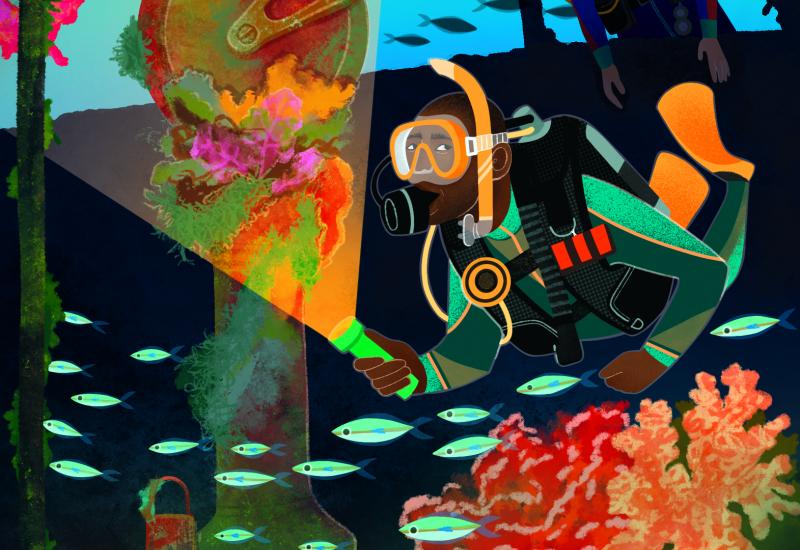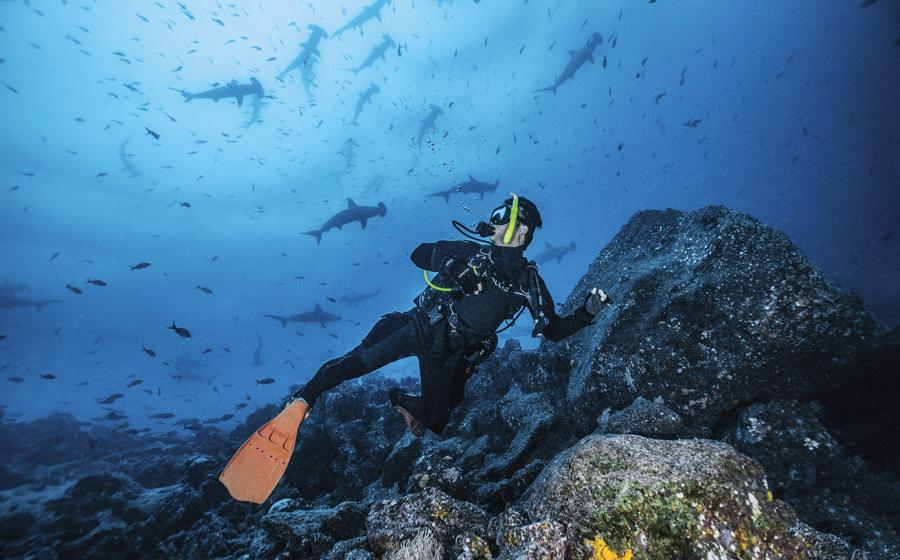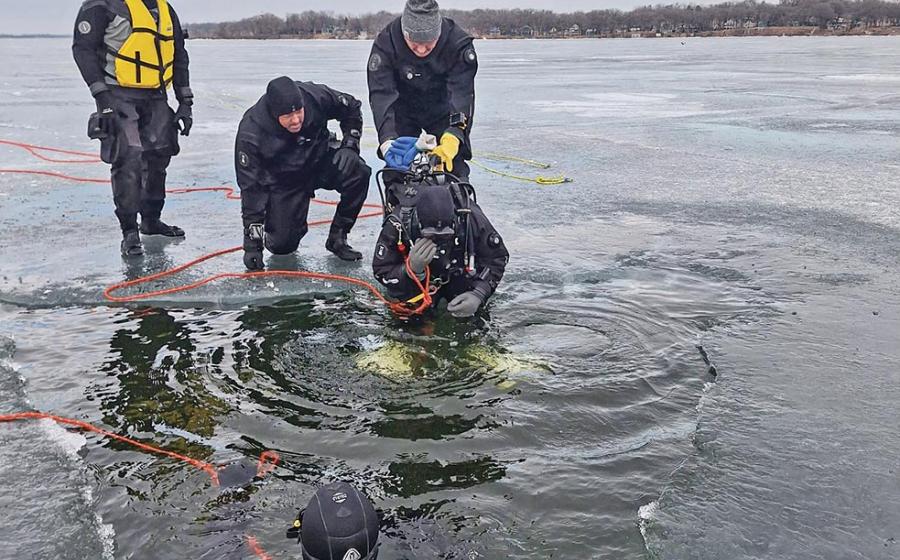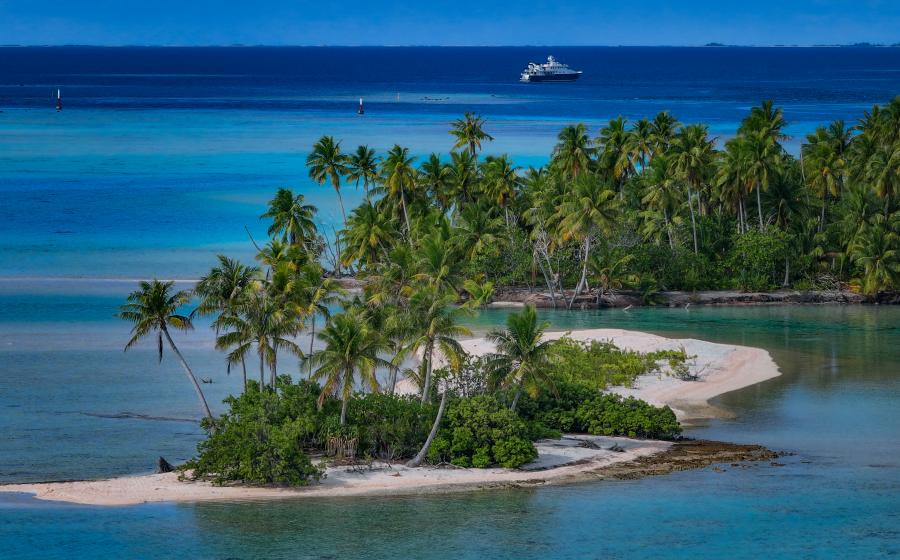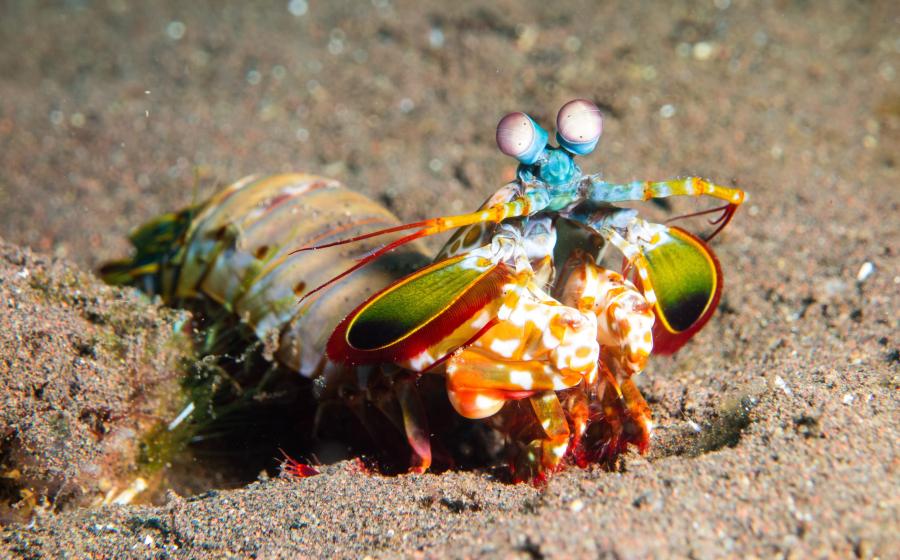Essential Tips for Diving Lake Superior, Michigan
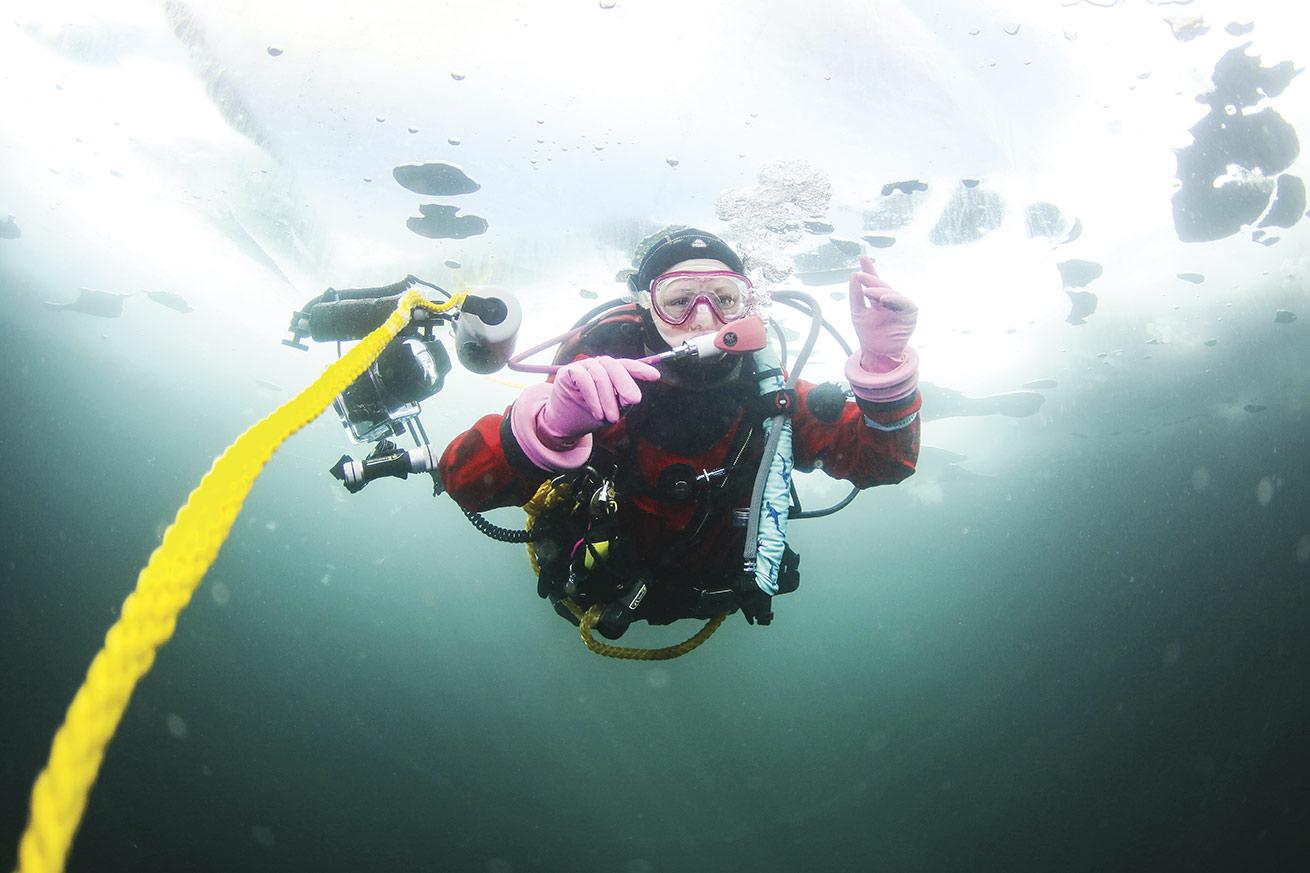
Rich SynowiecRich Synowiec’s daughter, Natalie, embraces the ice-diving life.
“It’s always guaranteed ice.” Rich Synowiec, CEO of Divers Incorporated and PADI Course Director based in Ann Arbor, Michigan, has organized an ice-diving weekend trip each February for the past few years to Munising, a small town on the northern edge of the Upper Peninsula, across from Grand Island.
Synowiec first got the idea to ice dive in Munising while on a summer camping trip there. As he met other divers, he heard the ice on Lake Superior can get up to 18 inches thick in certain areas. This became a reliable reason to plan a return trip in the winter, he says, since he “can guarantee ice at Munising,” where the climate typically produces ice either inland or on the lake.
Munising’s name comes from an Ojibwe word meaning “at the island,” and Synowiec’s group has a beautiful view of Grand Island from the ferry dock off Route 28 when the sun is shining on the ice.
“The ice builds up around the dock… the most has been 19 inches (we used a handsaw instead of a chainsaw for that one) and the least has been 1 foot [thick].” If Superior’s ice isn’t sufficient, Synowiec’s backup plan is to dive a smaller inland lake.
Divers look forward to the Friday-to-Sunday excursion every year, complete with a stay at a local Holiday Inn Express. They arrive in Munising around 4 p.m., and a Friday night pizza dinner officially kicks off the weekend around 8, during which Synowiec gives an orientation of the plan for the next few days.
On Saturday, the group—consisting of eight to 12 divers broken out into groups of four—heads onto the ice around 9 a.m. and stays out there till late in the afternoon.
Related Reading: Diving in the Georgia Aquarium

Rich SynowiecPADI Course Director Rob Williams prepares to take the plunge.
“We’re all about the safety of it. I need an instructor at every hole,” Synowiec says. As the weekend trip has grown more popular, he will sometimes do extra prep in advance: “My family and I go up a day early to find someplace where we can cut a hole and actually get in under the ice.”
On Sunday, they gather on the lake again in the morning and finish around midday, when Synowiec plans lunch before everyone departs. Besides the reliable ice, the sunny but cool conditions are also usually predictable (hint: wearing warm clothing is critical when you’re above the ice).
“I do everything in my drysuit, pretty much—I dress for it,” Synowiec says. “The coldest water is up at the ice; it’s kind of neat that you get warmer as you go down.”
Divers who are new to ice diving are welcome, and nondivers can learn how to be tenders working on the surface of the ice. “We’re trying to make it fun,” Synowiec explains. “We’ve had really good luck with people who show up for a dive and aren’t ice-diver certified.”
“Diving is all about the social aspect,” Synowiec continues. The annual trip builds community by introducing the intricacies of ice diving to more divers and giving veterans an opportunity to practice. “My family all ice dives now,” says Synowiec. And other divers travel from as far away as Utila, Honduras, to don their gear and challenge their skills under the ice for the weekend.
Related Reading: Building Bonds and Skills at Colorado's Scuba Challenge
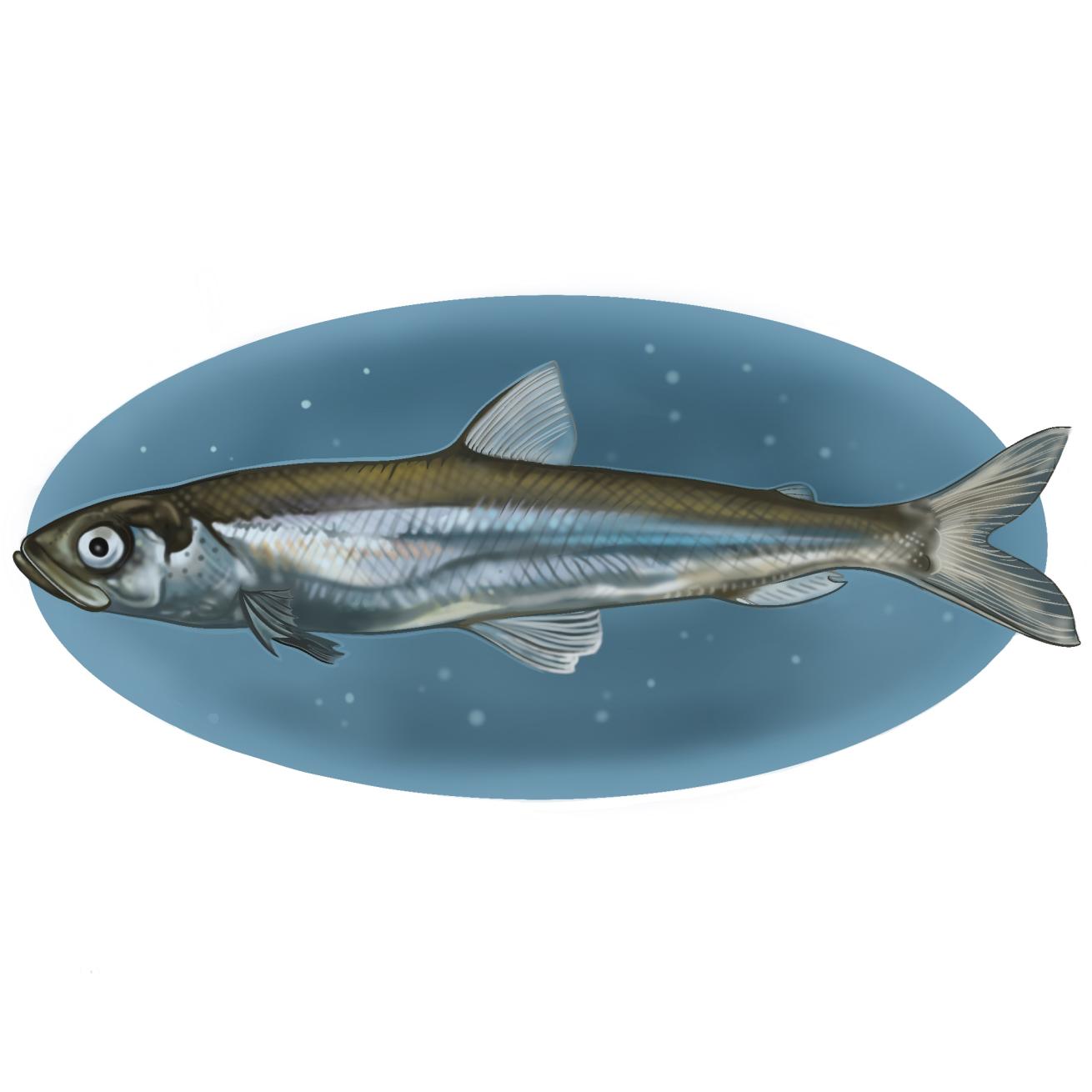
Illustration: Cassidy VincentSite Spotlight
Site Spotlight
Although Synowiec’s group of divers doesn’t typically encounter wildlife on their ice dives due to the sheer volume of water in Lake Superior and the cold temperatures driving fish down to the muddy lake bottom, smelt are a popular catch among the ice fishermen of Munising Bay. American smelt (Osmerus mordax) originally came from the Atlantic Ocean and grow to be about 8 inches long—smaller than their relatives, the European smelt (Osmerus eperlanus).
While other smelt species are endangered, these small, oily fish have been an important dietary staple of the region since Indigenous fishing practices were first established long ago. They typically peak in Lake Superior just after the ice disappears.
Need To Know
Conditions
Water temps: sub-40 degrees Depth: 30 to 40 feet
Certification
As part of your PADI Advanced Open Water cert, enroll in an Ice Diver course.
How to Get There
Fly into Marquette Sawyer, Munising’s regional airport, or into Detroit and drive.
What to Bring
Drysuit and warm clothes to change into.
Local Resources
Divers Incorporated diversinc.com




